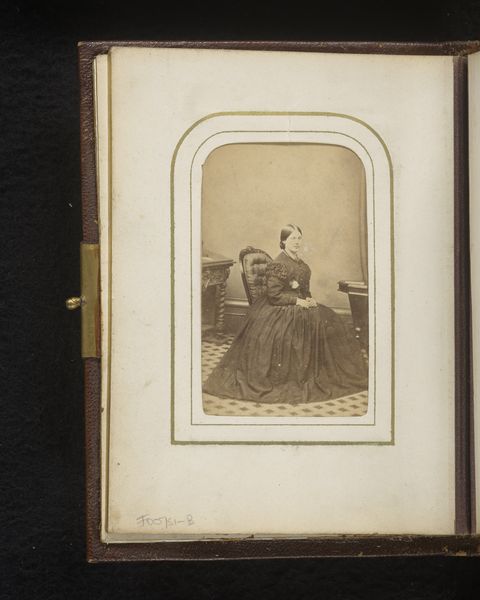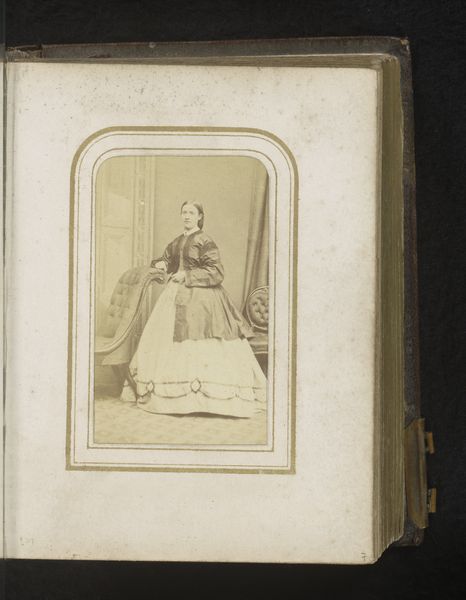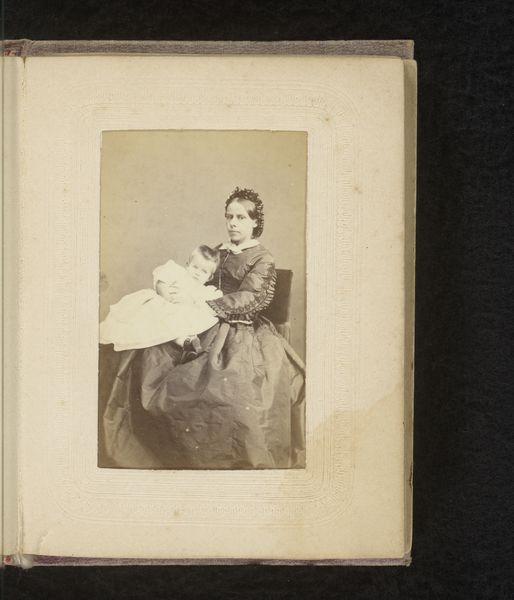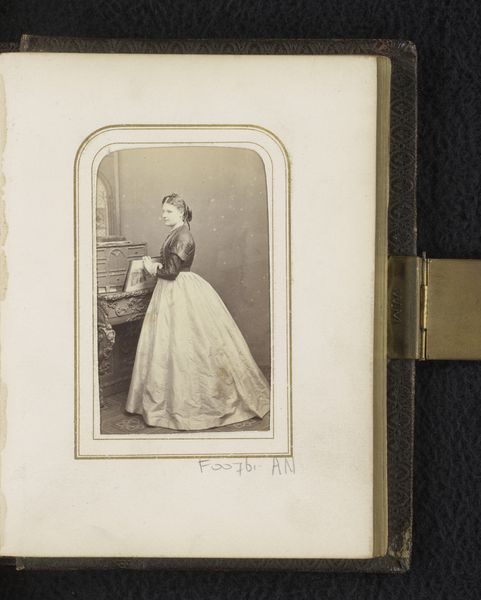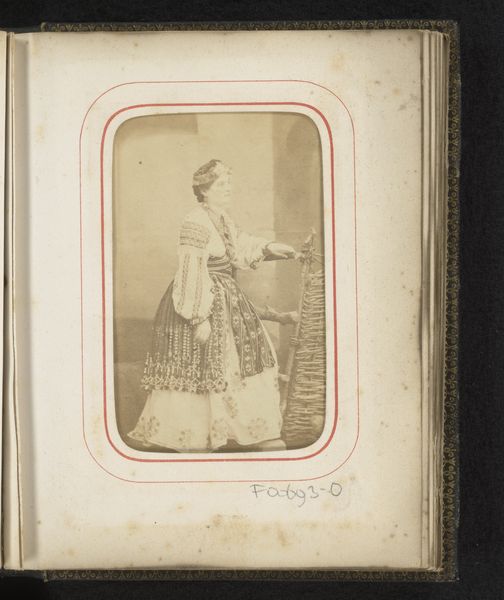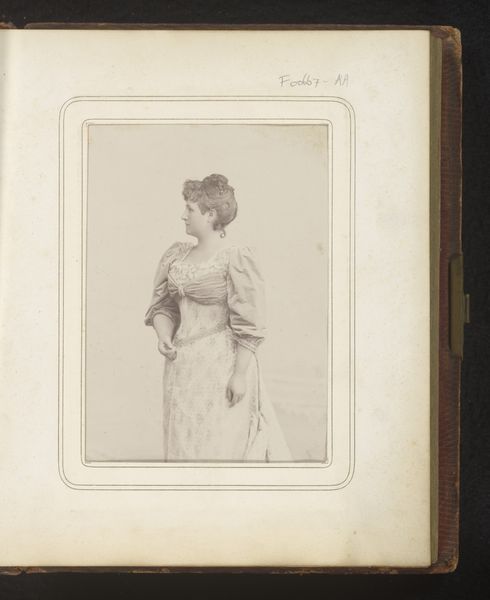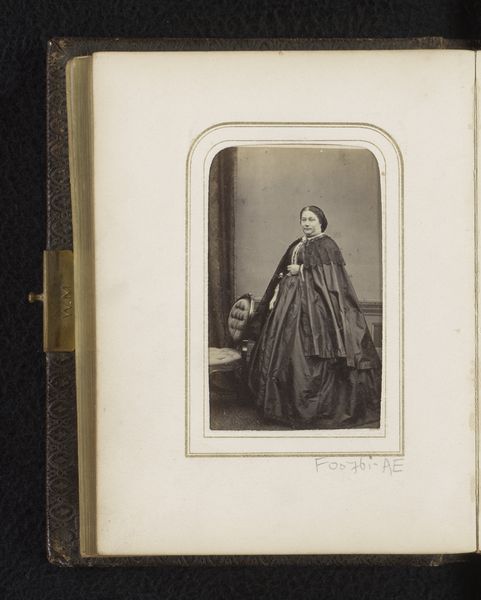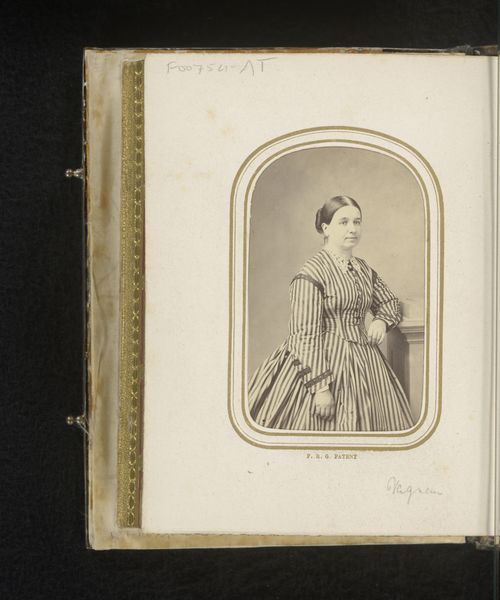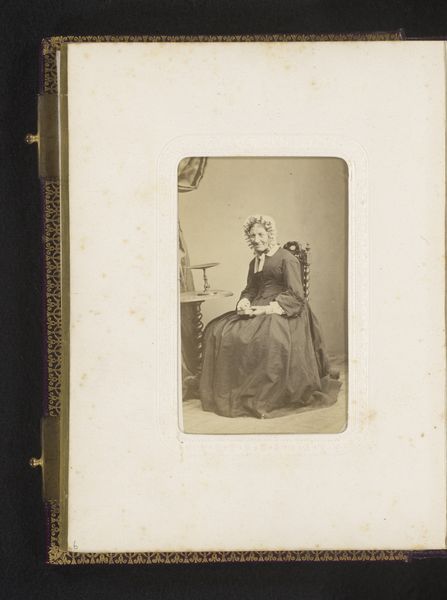
photography
#
portrait
#
dog
#
photography
#
genre-painting
#
realism
Dimensions: height 83 mm, width 52 mm
Copyright: Rijks Museum: Open Domain
Curator: Isn't that peaceful? The whole photograph has this stillness, a sort of contained breath. Like a memory pressed gently between the pages of an album. Editor: Indeed. This image, entitled "Portret van een zittende vrouw met een hond op haar schoot" – "Portrait of a Seated Woman with a Dog on her Lap," dates from 1860 to 1875, falling into a time of burgeoning photographic portraiture aimed at broader social strata. Curator: Right, the sort of formal, careful composition speaks of a specific time and place. Yet, there’s also something immediately relatable in the connection between the woman and her dog. Editor: Precisely. The burgeoning middle class and availability of photographic technologies allowed people to fashion themselves in particular ways. Posing with a pet was meant to be read as affluence, companionship, and familial belonging. This one strikes me as an almost performative representation of domesticity. Curator: I think you may have hit on something, as a person sitting in this century. To me there is also vulnerability in the image, you have these women, sitting for what had to have been a fairly long period of time to be captured correctly. This adds vulnerability in both subject matter, but it adds to the image itself. The pose is not static. Editor: Absolutely, because of the need to stay incredibly still. Photography during that time required a huge amount of light which means one slight movement will make the subject blurry, making sitting for pictures a grueling thing to do. Curator: Absolutely! Now, when I gaze at this picture, my mind wanders and tries to dream this little world within a picture to imagine this scene as someone's own story that they will be keeping safe from one to another in a physical representation that last forever. Editor: I am with you. Even though there's this posed stiffness to it, knowing about the subject is vulnerable is more than knowing. It humanizes them as an era, providing both emotional resonance and insights into social practices around identity construction, in particular when these new imaging technologies started coming into use.
Comments
No comments
Be the first to comment and join the conversation on the ultimate creative platform.
